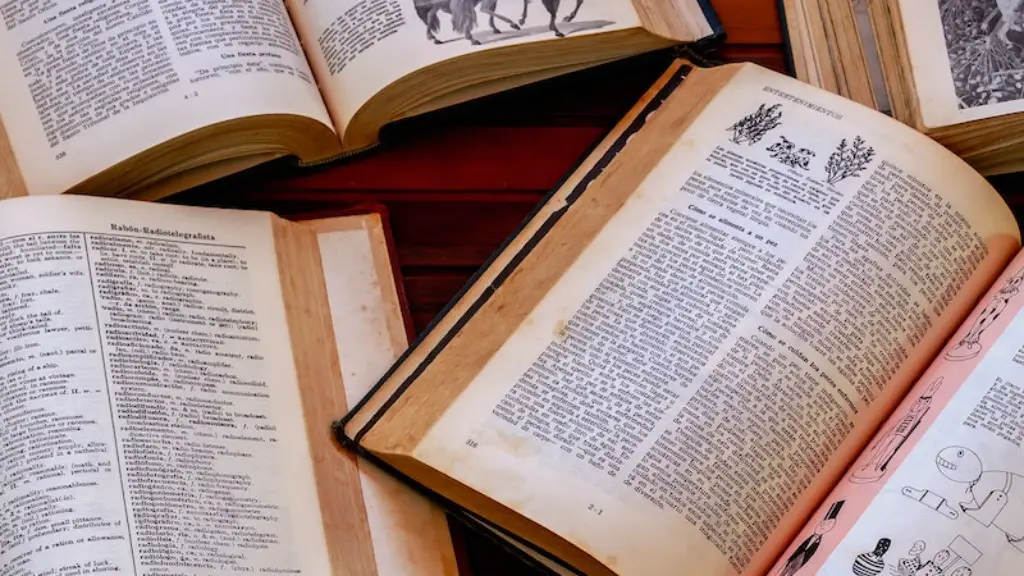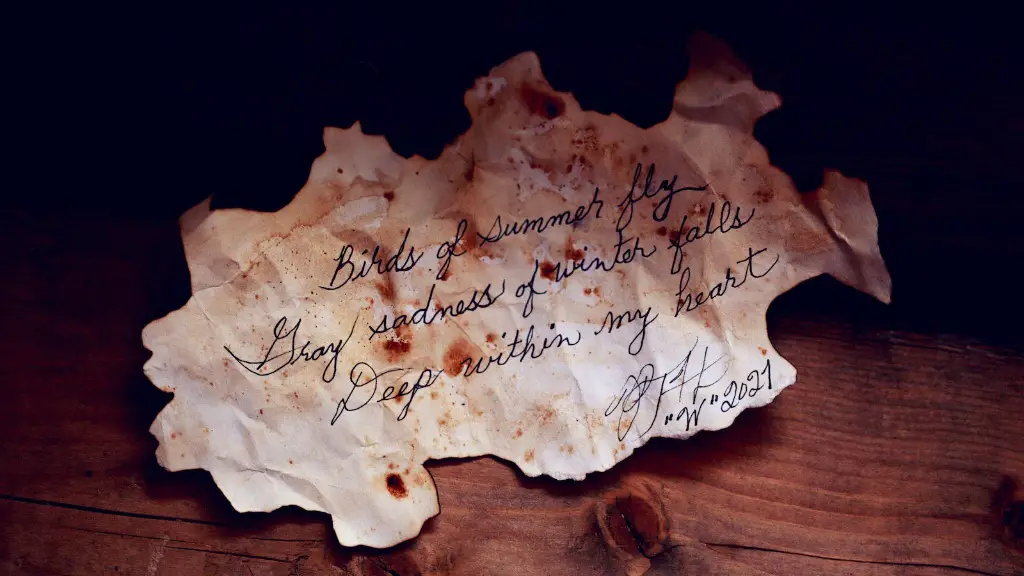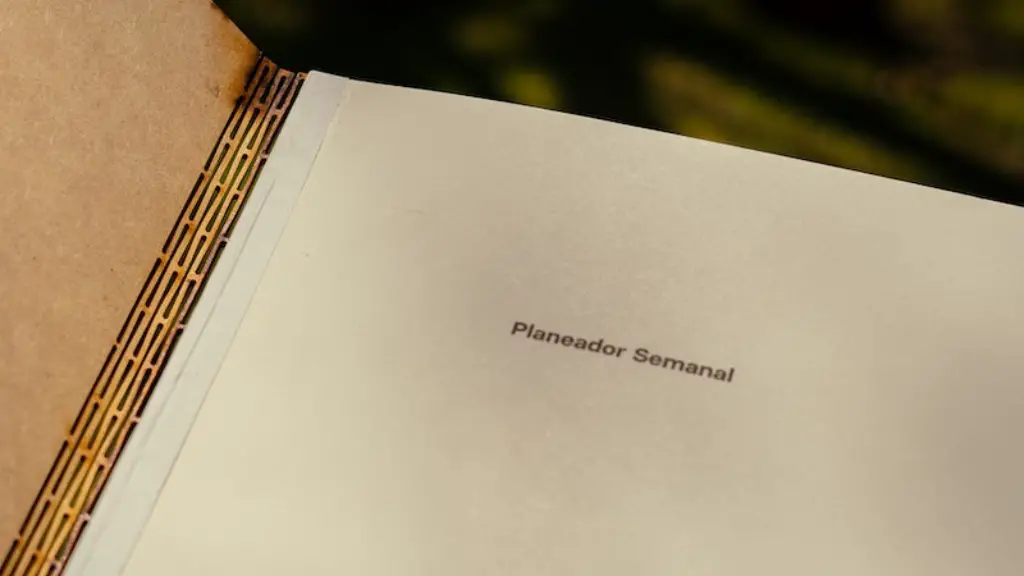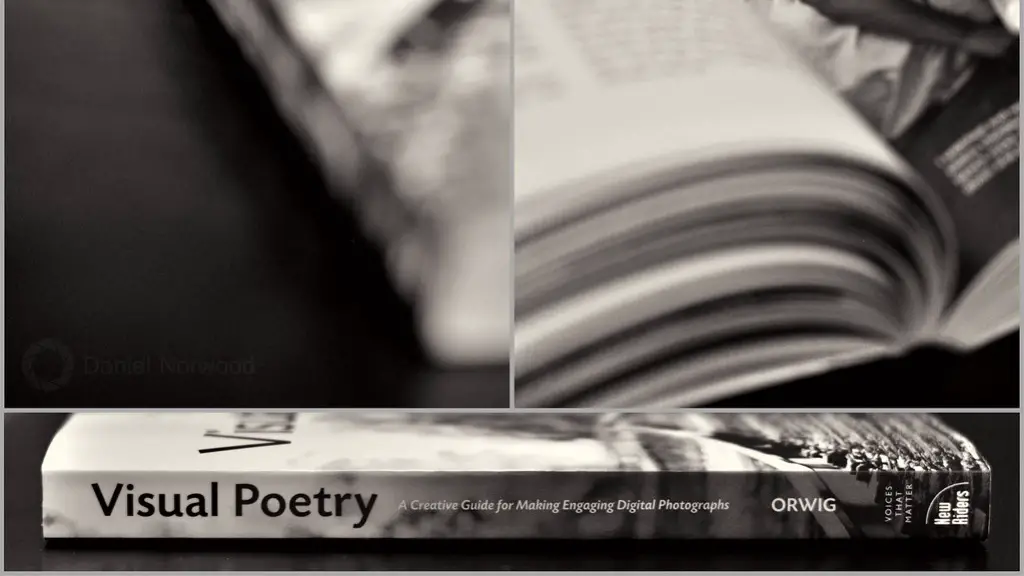Imagery is one of the key components of successful poetry. It is the use of vivid descriptions, which evoke the senses and bring the poem to life. Through powerful descriptions and the use of imagery, poets can craft vivid images in their reader’s minds before they even finish reading the poem.
Using different types of imagery, poets can convey vivid impressions and create an emotional link between the reader and the poem. The three main types of imagery used in poetry are visual, auditory, and tactile imagery. Each one of these types of imagery can be used to create a unique atmosphere and evoke strong emotions from the reader.
Visual Imagery
Visual imagery is used to create vivid images in the reader’s mind. It usually involves using vivid language to describe the elements of a scene – landscapes, objects, people and animals – as if they were right in front of the reader. These images can be so powerful that the reader can feel almost as if they are right there at the scene.
For example, in Robert Frost’s poem “The Road Not Taken”, Frost uses visual imagery to make the reader feel as if they are at the crossroads with him. He writes, “Two roads diverged in a yellow wood/And sorry I could not travel both/And be one traveler, long I stood”. With these words, Frost creates a vivid image of the scene in the reader’s mind.
Auditory Imagery
Auditory imagery is used to create vivid impressions of sounds and noises within the poem. This can include anything from the chirping of birds to the sound of footsteps or a howling wind. By using auditory imagery, poets can create a sense of atmosphere and evoke emotions from the reader.
For example, in Edward Thomas’s poem “Adlestrop”, Thomas uses auditory imagery to create an atmosphere of peace and calm. He writes, “The pauses in the wind that never briefer seemed, All round the bloomless
May, the alliterations of the birds/Ceaseless from the nest and scarce awake”. With these words, Thomas helps the reader to visualise not just the scenery, but also the gentle sound of the birds and the wind.
Tactile Imagery
Tactile imagery is used to evoke the sense of touch. This type of imagery is often used to evoke a sense of physical sensation, such as the warmth of a fire or the coldness of a body of water. Tactile imagery can also be used to evoke emotions from the reader.
For example, in Emily Dickinson’s poem “Hope is the thing with feathers”, Dickinson uses tactile imagery to evoke a sense of warmth and comfort. She writes, “it remembered not its own despair,/But a new existence to unfold.” With these words, Dickinson conveys a feeling of warmth and hope, which is also echoed in the imagery of the poem.
Analytical Imagery
Analytical imagery is a type of imagery which focuses on the intellectual aspects of a poem. It is used to convey philosophical or abstract ideas, and it often uses symbols and metaphors to convey the message of the poem. Analytical imagery can be used to create a vivid image in the reader’s mind and evoke powerful emotions.
For example, in William Blake’s poem “The Tiger”, Blake uses analytical imagery to convey ideas about the power and ferocity of nature. He writes, “What immortal hand or eye/Dare frame thy fearful
symmetry?” Through this imagery, Blake creates a vivid image in the reader’s mind of the power of nature, and he evokes emotions of awe and wonder.
Metaphorical Imagery
Metaphorical imagery is a type of imagery which uses figurative language to convey an idea or emotion. It often involves the use of symbols and metaphors to create a vivid image in the reader’s mind. Metaphorical imagery can be used to evoke strong emotions from the reader and convey an abstract idea.
For example, in Walt Whitman’s poem “I Hear America Singing”, Whitman uses metaphorical imagery to evoke a sense of optimism and patriotism. He writes, “Each singing what belongs to him or her, and to none else;/The day what belongs to the day–at night the party of young fellows, robust, friendly”. With these words, Whitman evokes a strong feeling of patriotism and optimism from the reader.
Personification Imagery
Personification imagery is used to evoke a sense of character or life in inanimate objects. It involves the use of figurative language to give life and character to non-living things such as animals or objects. Personification imagery can be used to create vivid images in the reader’s mind and evoke powerful emotions.
For example, in Langston Hughes’s poem “Dream Deferred”, Hughes uses personification imagery to evoke a sense of frustration and despair. He writes, “Does it dry up/like a raisin in the sun?” Through this imagery, Hughes conveys a feeling of frustration and despair at the unsuccessful dreams of his people.
Symbolism Imagery
Symbolism imagery is used to convey abstract ideas and emotions. It involves the use of symbols and metaphors to create vivid images in the reader’s mind. This type of imagery is often used to evoke a sense of mystery or ambiguity.
For example, in Robert Frost’s poem “The Road Not Taken”, Frost uses symbolic imagery to create a feeling of ambiguity and uncertainty. He writes, “Two roads diverged in a yellow wood/And sorry I could not travel both/And be one traveler, long I stood”. With these words, Frost conveys a feeling of confusion and uncertainty, which is often felt when making difficult decisions.
Simile Imagery
Simile imagery is used to make comparisons and evoke strong emotions from the reader. It involves the use of figurative language to compare two different objects or ideas. By using simile imagery, poets can convey vivid impressions and create an emotional connection with the reader.
For example, in William Wordsworth’s poem “Lines Written in Early Spring”, Wordsworth uses simile imagery to create a vivid image in the reader’s mind. He writes, “And I the while, the sole unbusy one/Voyaging through strange seas of thought, alone”. With these words, Wordsworth evokes a strong feeling of loneliness and reflection from the reader.
Metonymy Imagery
Metonymy imagery is a type of figurative language which involves the use of a symbol to represent something else. It can involve the use of a specific object to represent a larger concept or emotion, or the use of a person’s name to refer to an idea or emotion associated with them.
For example, in Dylan Thomas’s poem “Do Not Go Gentle Into That Good Night”, Thomas uses metonymy imagery to convey the idea of death. He writes, “Rage, rage against the dying of the light”. With this imagery, Thomas conveys the idea of death and evokes a feeling of desperation and anger in the reader.





